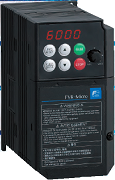Content:
- Why does one need to connect an additional sensor?
- How to connect an external sensor to a frequency converter?



The use of frequency converters in control systems for the operation of electric motors in various technical processes leads to an improvement in the parameters of the controllability of the system. In addition, the connection of sensors to the frequency converter allows you to increase the accuracy and cost-effectiveness of operation of some systems.
The most common solution of this type is to connect a pressure sensor to a frequency converter that controls the pump motor in various engineering systems.
Why does one need to connect an additional sensor?
If we consider a classical pumping station, the operation of the electric motor should ensure the supply of liquid to consumers in the required volume and with a given pressure. If the level of consumption decreases, the pressure in the system increases, which can lead to its breakdowns, as well as energy overruns. Installing a pressure switch in this case will simply lead to on-off cycles of the engine, which, in turn, will cause cyclic pressure surges and faster wear of the equipment.
When the pressure sensor is additionally connected to the frequency converter, the system receives additional feedback, which, if properly configured, allows you to:
- get a constant nominal pressure in the system;
- smoothly change the operating mode of the electric motor depending on the current pressure value;
- save energy;
- extend the service life of the system components.
In order to connect an additional external sensor to the frequency converter, you need to select a model of the converter with the ability to connect external sensors and the sensor itself, which must be compatible with this type of converter.
How to connect an external sensor to a frequency converter?
The typical connection diagram of the pressure sensor to the frequency converter is quite simple and can be found both in the documentation for the frequency converter and in the documentation for the sensor, where there is a specification of the terminals on the regulator and sensor, respectively.
As a rule, the sensors can have a two-or three-wire connection line to the frequency receiver and a different supply voltage. This should be taken into account when choosing the sensor and frequency converter models. On the models of frequency receivers, it is possible to use sensors with current or voltage output. For this purpose, either appropriate terminals or hardware switches can be provided.
In general, the connection of the pressure sensor to the frequency converter is performed according to this principle:
- install an external pressure sensor;
- lay a signal cable from the sensor to the frequency converter;
- connect the wires according to the scheme to the corresponding terminals;
- if necessary, install jumpers or switches on the frequency receiver, depending on its model and the sensor model;
- perform the configuration of the software part of the frequency receiver, taking into account the new feedback;
- testing the operation of the system.
Please note that only a high-quality shielded signal cable should be used to connect the sensor to avoid interference and interference.
If you need additional advice on the choice of frequency sensors, pressure sensors and their coupling, you can contact our specialists for help.





